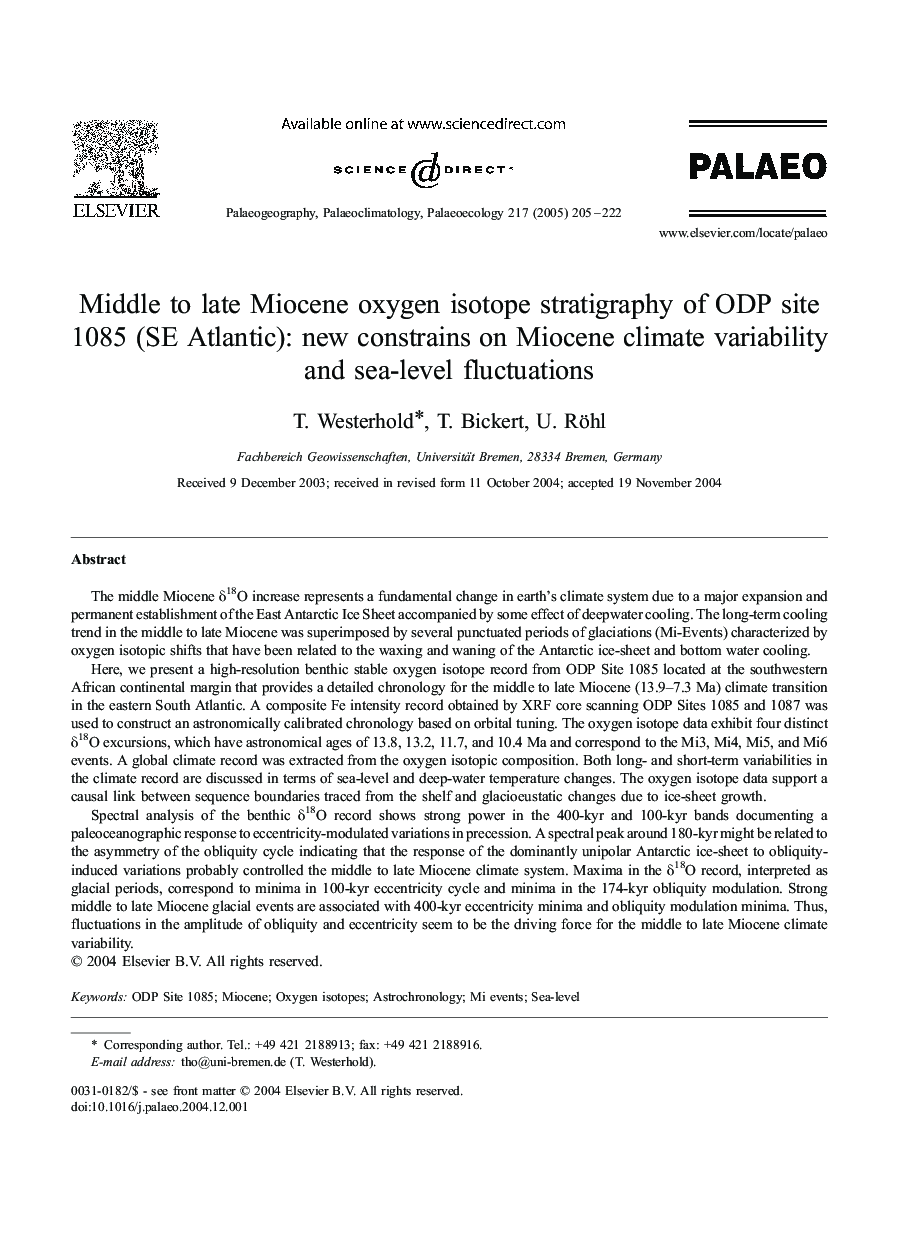| Article ID | Journal | Published Year | Pages | File Type |
|---|---|---|---|---|
| 9463190 | Palaeogeography, Palaeoclimatology, Palaeoecology | 2005 | 18 Pages |
Abstract
Spectral analysis of the benthic δ18O record shows strong power in the 400-kyr and 100-kyr bands documenting a paleoceanographic response to eccentricity-modulated variations in precession. A spectral peak around 180-kyr might be related to the asymmetry of the obliquity cycle indicating that the response of the dominantly unipolar Antarctic ice-sheet to obliquity-induced variations probably controlled the middle to late Miocene climate system. Maxima in the δ18O record, interpreted as glacial periods, correspond to minima in 100-kyr eccentricity cycle and minima in the 174-kyr obliquity modulation. Strong middle to late Miocene glacial events are associated with 400-kyr eccentricity minima and obliquity modulation minima. Thus, fluctuations in the amplitude of obliquity and eccentricity seem to be the driving force for the middle to late Miocene climate variability.
Related Topics
Physical Sciences and Engineering
Earth and Planetary Sciences
Earth-Surface Processes
Authors
T. Westerhold, T. Bickert, U. Röhl,
